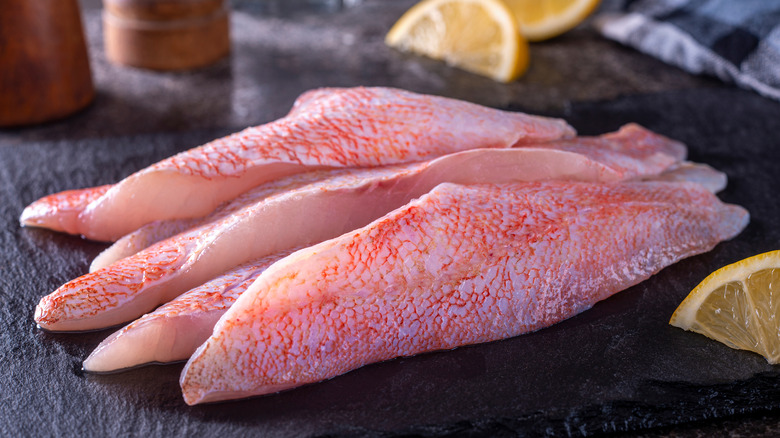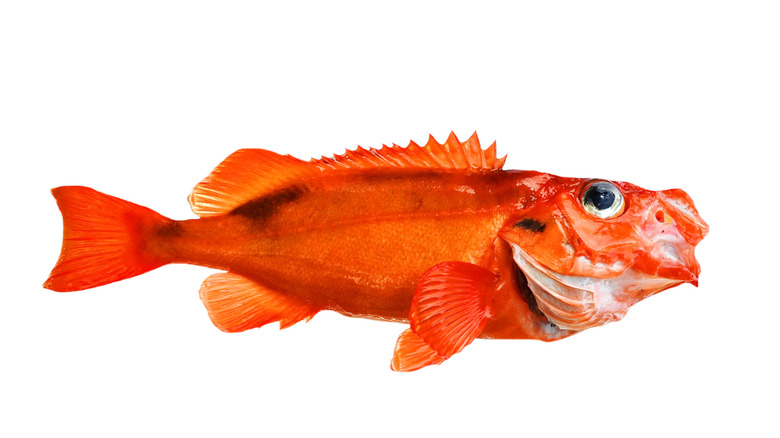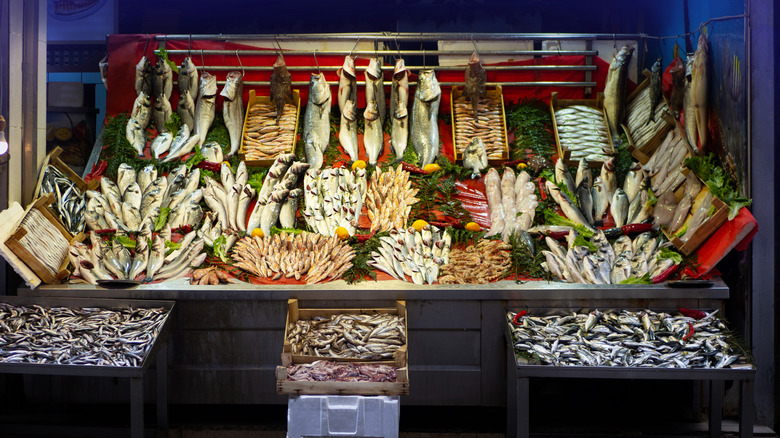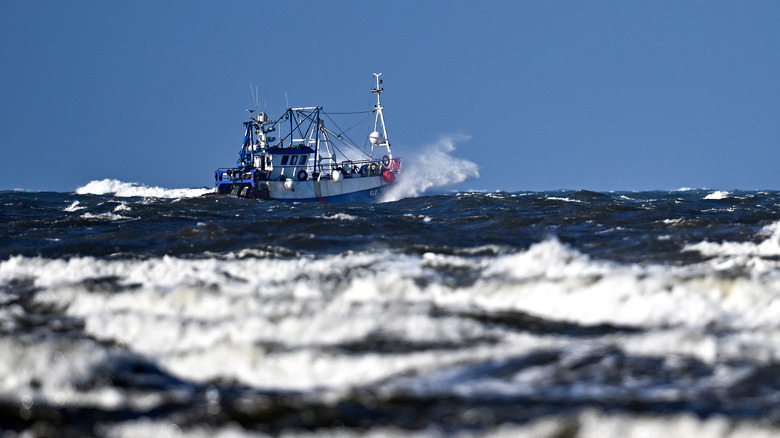Everything You Need To Know About Acadian Redfish
In the tides of the Atlantic Ocean resides a red, flat-bodied fish that NOAA Fisheries shares has been known to live over 50 years. Also called the ocean perch or sometimes the labrador redfish, the Acadian redfish (Sebastes fasciatus) is actually the only member of the ocean perch family present in the Atlantic Ocean. The Pacific Ocean around the corner boasts plenty of ocean perch species, but in the Atlantic, this flaming fish reigns supreme.
The Acadian redfish is affordable, tasty, and considered underutilized by many, like Buying Seafood. With a history of overfishing, it now sits at a comfortable population level domestically due to a variety of measures, like better management of fishing the waters these redfish swim in, and regulations like annual catch limits, minimum sizes which allow younger fish time to grow, and spawning area closures to allow the fish to repopulate.
What is Acadian Redfish?
Our fiery fish friend is a slow-growing ocean perch that lives in deep waters with rocky or muddy bottoms (via Cape Ann Fresh Catch). The Acadian redfish can range from orange to bright red in its coloring, reports NOAA Fisheries, with a slightly paler underside.
These fish do not develop their striking pigmentation until they move deep into the ocean, a few months after hatching, so young redfish are a patchy black and green color. After these little fish reach a size of about two inches, they head into deeper waters. The fish will grow to be around 18 to 20 inches at maturity, which is a long way off from their trek to deep waters: Acadian redfish take five to six years to reach full maturity.
The Acadian redfish population in domestic waters resides in New England but is densest in the Gulf of Maine. Harvests happen year-round, with the biggest number of redfish pulled in the spring and summer.
How can I eat Acadian redfish?
The redfish, prepped right, can make a tasty addition to any meal, served with your usual fish sides like steamed veggies or rice. The raw fish has a creamy white flesh that turns to a more opaque white when cooked through (via Cape Ann Fresh Catch). Adding flavor to this fish is no biggie, as it has a mildly sweet flavor and smooth texture that can take on any seasonings or garnishes and pairs with many different tastes.
You can serve this fish in most of the typical ways: give it a toss in a pan to fry it up, let it absorb heat in the oven, sauté or steam it — you name it. Once cooked, the Spruce Eats says the fish will flake in big pieces when forked. This fish would also work well in tacos or fried on a sandwich.
Redfish contains a variety of nutrients, including niacin, vitamin B12, and calcium; has over 15 grams of protein per serving; and is low in saturated fat, making it a nutritious option in addition to a delicious one (per LUSAmerica)!
Where can you buy Acadian redfish?
Acadian redfish sits primarily on the shelves of grocery stores and the racks of fish markets in New England, but can also be purchased from online vendors if you don't reside near an area these fish are located. Wholesale sellers offer Acadian redfish to restaurants, while smaller scale purchases can be made by the pound from retailers like Wulf's Fish.
Like other fish, the Acadian redfish is often sold cut into filets, both frozen or fresh, but if you check out a local fish market, you might just see the distinctive red fish whole, with large, bulging eyes. Buying Seafood explains this is caused by the deep waters the fish are caught in.
Once purchased, the fish should be cooked within two days if fresh or thawed, per the USDA, or stored in the freezer. Frozen, it can last for up to nine months, according to fish vendor Red's Best. If you get your fish shipped to you, it will probably come flash frozen and vacuum sealed.
How sustainable is the Acadian redfish?
In the 20th century, New England fishers flocked to the waters around them and pulled the Acadian redfish out in massive numbers (via Buying Seafood). The resulting sales caused massive economic surges for some ports handling the influx of fish. After being overfished in the '30s and '40s, Cape Ann Fresh Catch reports the Acadian redfish now sits at a comfortable level. FishWatch calls it a "smart seafood choice" for those concerned with sustainability.
Though this fish is considered underutilized by Buying Seafood, that doesn't mean anyone is suggesting it should be fished more, as the Acadian redfish is at its target fishing level and above its target population level. The outlet calls the Acadian redfish underutilized due to low demand for the fish and it not having a massive reach despite the steady supply. These factors are also what make the fish fairly affordable.




